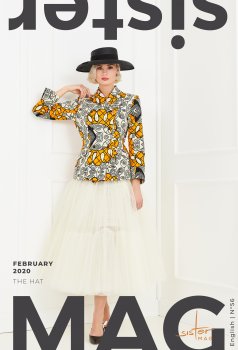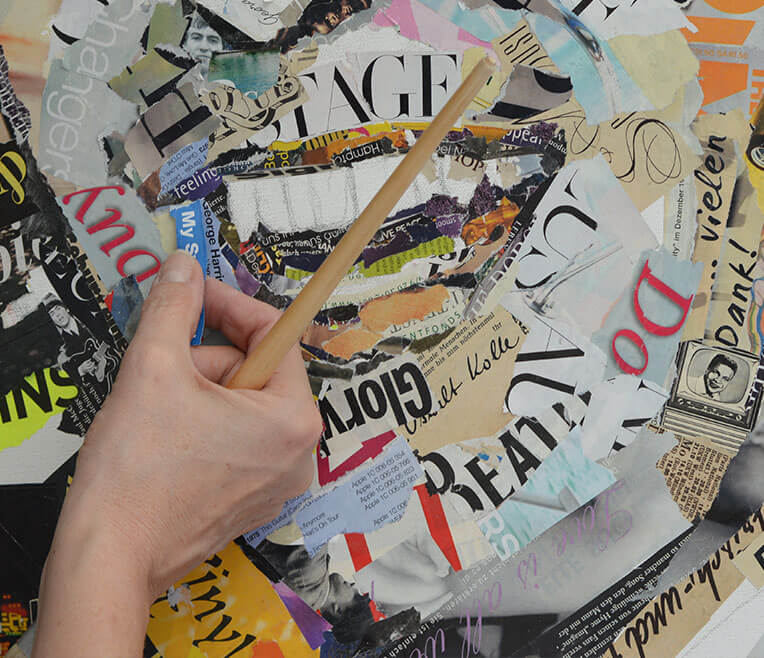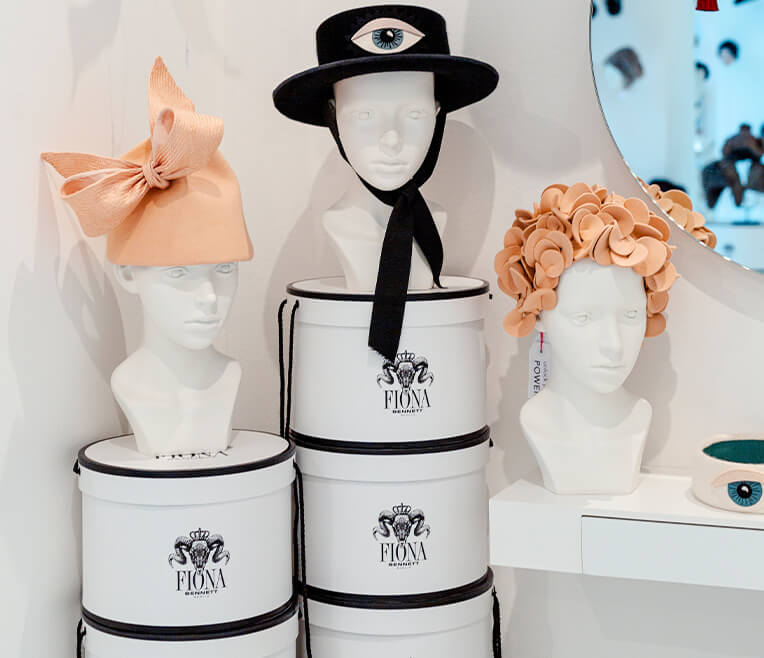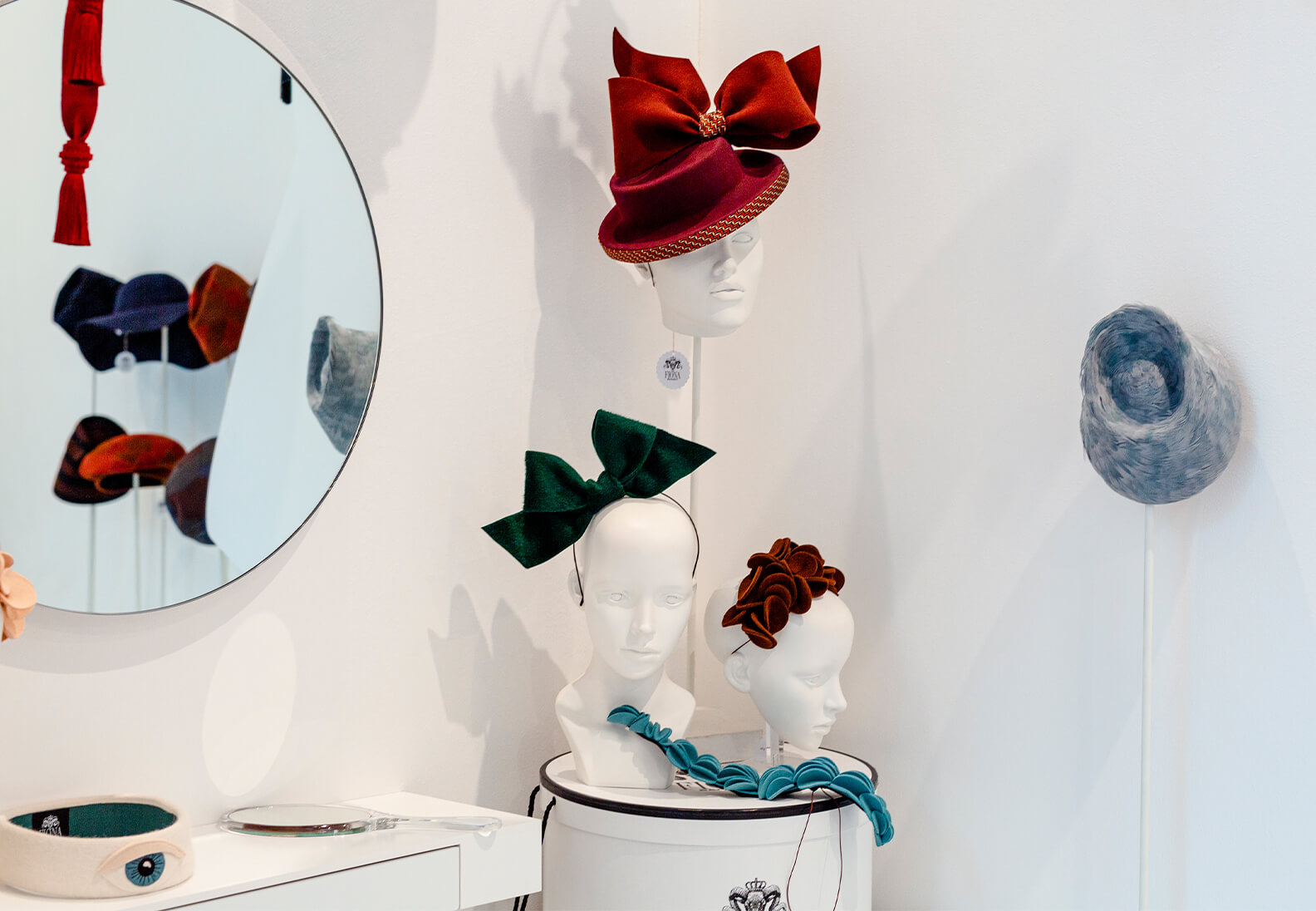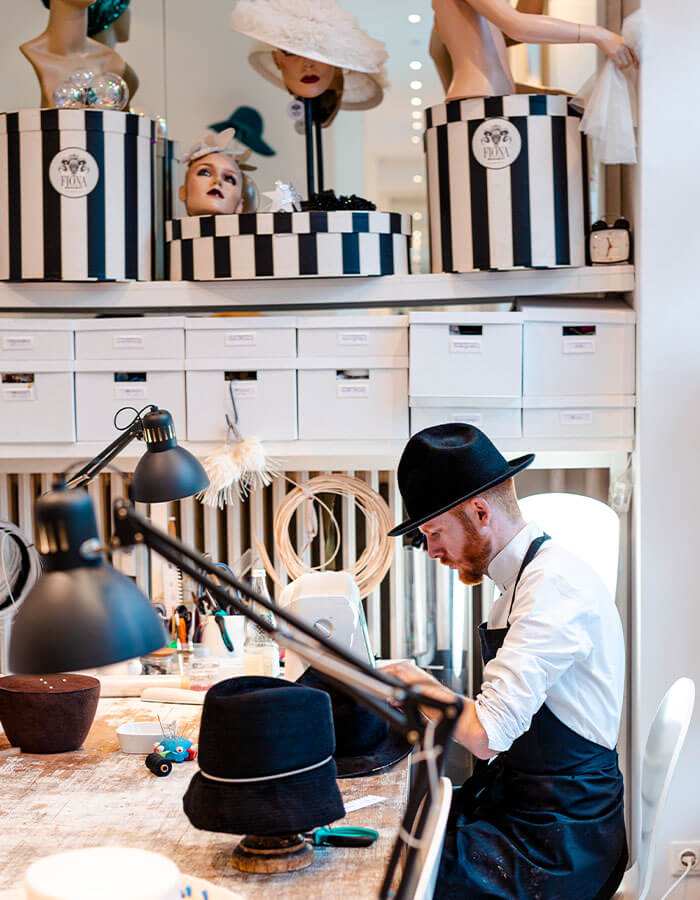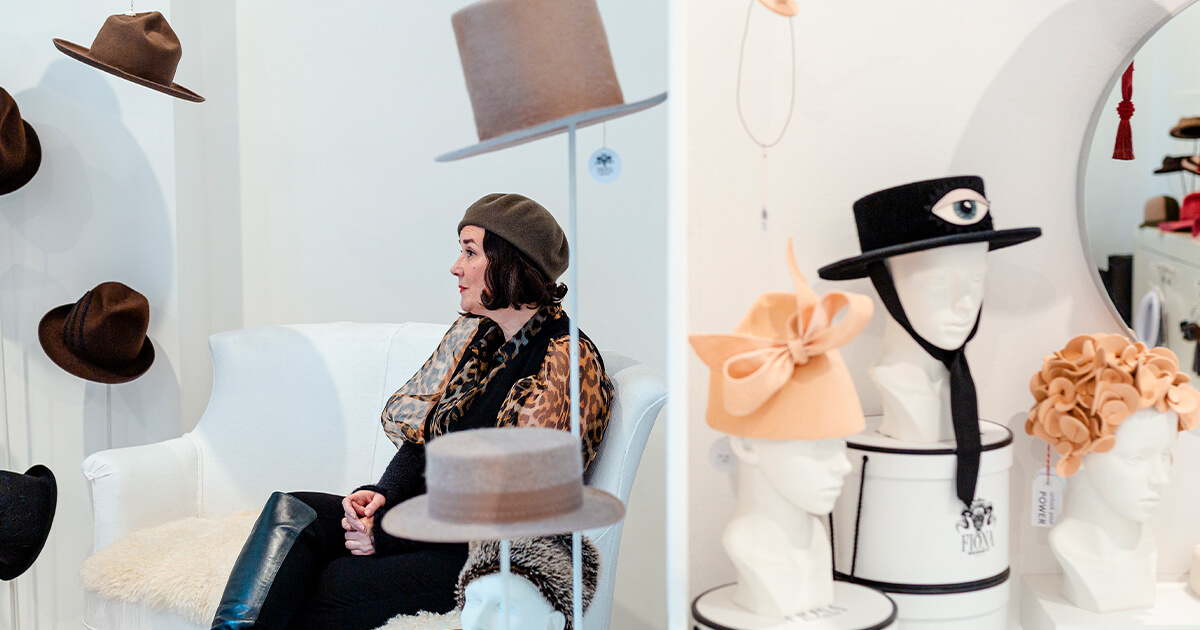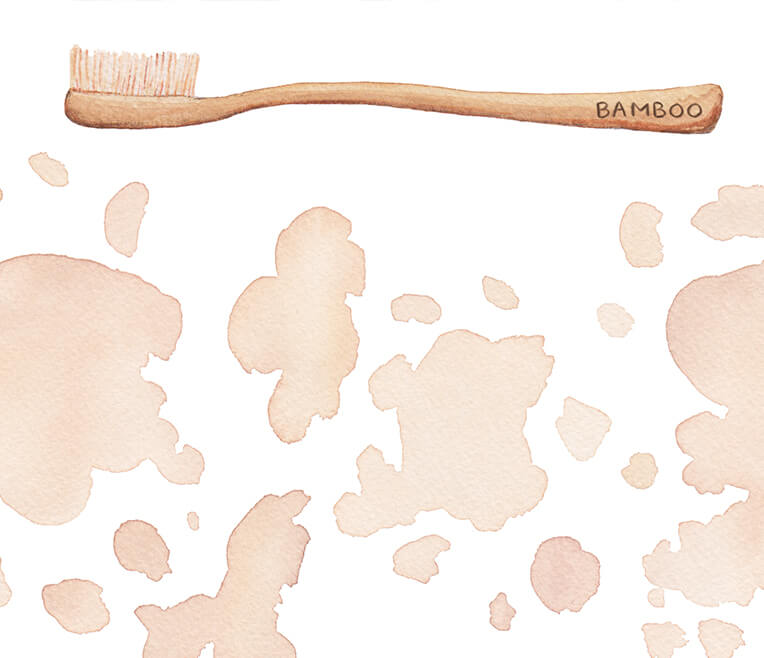
Interview with milliner Fiona Bennett
The milliner Fiona Bennett has become a real Berlin institution for her unusual hat designs. So it was clear that we absolutely had to interview her for our hat issue! Gabi and Caro from the sisterMAG team met up with her in her shop at Potsdamer Strasse in Berlin and learned a lot about the craft of hat making. You can find the whole interview here.
- Interview: Carolin Kralapp
- Photos: Gabriela Morales
»Putting the craft of hat-making centre stage«
Interview with milliner Fiona Bennett
»Our open studio is supposed to put a spotlight on millinery. To show that we still make everything with our hands, which is truly rare in today’s times.« – Fiona Bennett
Born in Great Britain, Fiona Bennett moved to Berlin at seven years old. Her unique creations in millinery have now made her an icon in the city – the gleaming white »hat palace« on Potsdamer Straße 81 perfectly shows off the creations that can also be found in glossy magazines and on the heads of celebrities. In this first issue of 2020, we’d like to introduce you to the milliner. One thing is for sure: even if millinery is a rare craft nowadays, it is a true art.
Berlin Fashion Week just took place in January. You made a couple of hats for the show of Lena Hoschek. How did you like the show?
I think Lena always does great work. She has her own style. Her designs are very feminine, vintage and beautifully made. I loved the show. We had five different hats in it that really shone in their simple presentation. Other than that, I’m not really involved in the craziness of fashion week – if designers need my help, I love being there!
Where did you learn to be a milliner and how did you get there?
I learned the craft over 30 years in Berlin-Kreuzberg with a very traditional milliner. We made a lot for circuses, the Schiller-theatre and the opera. I had great training. Hats were thought of as very old-fashioned back then. Few people were interested in them and as a result, the craft was dying. Only our old customers wore hats every day – but I could see their potential.
Would you say that this has changed today?
Absolutely. We’ve been working on re-inventing hats for a long time; it’s a true pioneer project. I wanted to bring the beauty of this craft into today’s world and to translate it so that hats would still be desirable today and not be »old hats« anymore.
Which steps do you go through when designing and making a hat?
As a base, we only need a wooden head, felt, water and an iron. And a pair of skilled hands, of course. The hot felt is stretched over the shape and reacts to the heat and humidity. We use a traditional technique that most milliners don’t learn anymore: we iron the felt by hand. This is definitely a kind of art. Many cheaper hats are just put in shape in one piece. We are usually able to put anything on a hat – given that it doesn’t surpass a certain weight. Hats have to be very light. The options are endless, and it’s fascinating to experiment with this.
How many collections do you have per year?
Very traditional: we have two collections per year – spring/summer and fall/winter. We also have a few sub-collections like a wedding line, evening headwear, hats for the races and a sustainable summer collection called »One World«. For this, we work with a village in Northern Ghana and make hats together with basket weavers. We also offer hats and caps for men, soft-caps, knitted hats in cashmere and so on. One collection always has several sub-themes. Additionally, we make tailored hats for films and theatres – lots of variety. A couple of our bestsellers are always for sale. But our customers are more than welcome to customise the colours and details of their hat according to their wishes.
Do you offer custom-made designs?
Yes, we regularly have those on top of the other work. At the moment, we’re working on models with a well-known artist. We most often make custom-made designs for the stage. Many of the hats on the first three seasons of the TV show »Babylon Berlin« are ours. Last year, we also had a couple of orders for children’s cinema like »Jim Knopf« and »Burg Schreckenstein«.
How long does it take you to make a hat?
If you deduct the drying times, it can range anywhere from 5 to 40 hours. It really depends on the technique you use. One-offs always take more work than copying something. The production of models from our collection is of course much faster than developing a new creation.
Where do you find inspiration for hat designs?
I believe that creative people always take in everything that happens around them – visually and emotionally. We also always have specific themes for a collection. Our last one was called »Unlock your Power«. I developed that after travelling to India. I came back empty-handed, hadn’t bought any fabrics or other ingredients for the studio like we had agreed on. I just didn’t want to go shopping; instead I wanted to be in nature. Still, I came up with a collection that was inspired by the trip.
What does the Potsdamer Straße mean to you and how long have you been there?
We’ve been here for eight years. I moved into the building with my friend and business partner Hans-Joachim Böhme to continue the label together. The location was kind of controversial at first but now the street is well-loved for its atmosphere and the proximity to many important galleries. We were particularly intrigued by the huge windows with 20 metres of glass. The Wintergarten Varieté across the street also reminded us a little bit of Paris.
You’ve been part of a couple of exhibitions. How important is art to you? Do you see your hats as art?
I usually make a difference between collections and objects that are made separately from this »head of collections«. We had an object that made an appearance in several exhibitions this year: a giant bird in a dive that crashes into a mirror and completely shatters it. Craft is always the starting point and the art develops from there. At the moment, we’re working on a request for a big solo exhibition on millinery in Portugal that will open in October 2020 and run for six months.
How many employees does your company have?
At the moment, we are five people including myself. The number constantly changes depending on what we work on. We have two permanently employed milliners, one office employee, as well as my business partner Hans-Joachim Böhme and me. Occasionally, we also employ interns, students, tailors and knitters – so the team can grow to around 10 or 15 people. We also train people and have just decided to remain a smaller team to be able to really focus.
Is millinery a »dying art «? Or are there enough young people in the business?
Millinery is definitely still a dying art, and it sadly is badly supported and promoted. We mustn’t forget: it is the craft with the lowest pay for trainees. It is almost impossible to develop it today. But we still fight for it. At one point, we had quite a big amount of people interested in traineeships – we almost opened a school. At the moment, requests have died down a bit and for the past year, we have interestingly had mostly male applicants, so it seems like something is changing.
What does your favourite hat look like?
Of course this changes often. I wear our most classical model every day: a beret with earflaps made from merino wool. When I’m out and about, I love bringing a dark brown matelot-hat, with an added felt eye on the forehead and brown silk tassels on long ribbons that playfully connect the body to the head.
Learn more about Fiona Bennett on her website.

